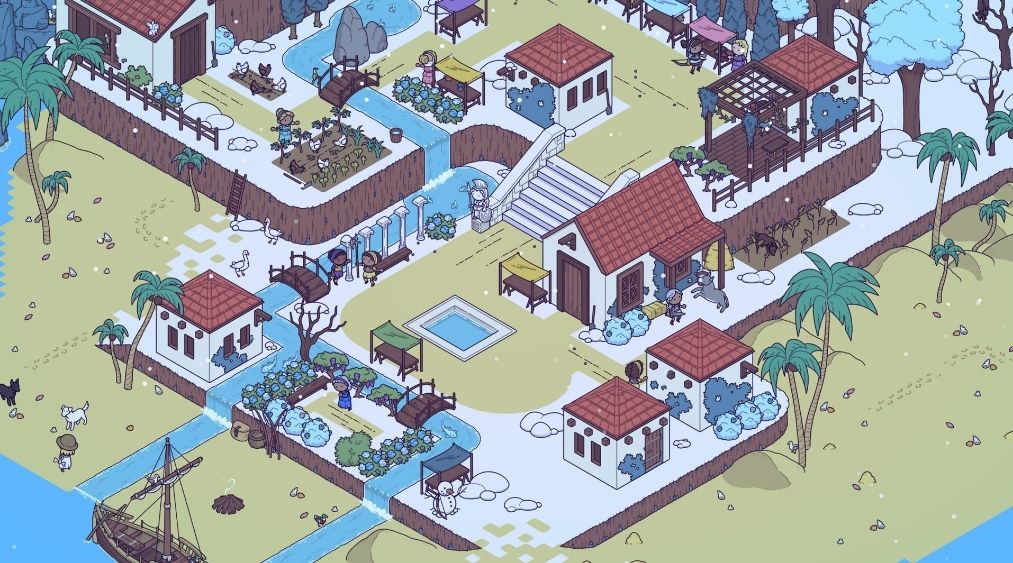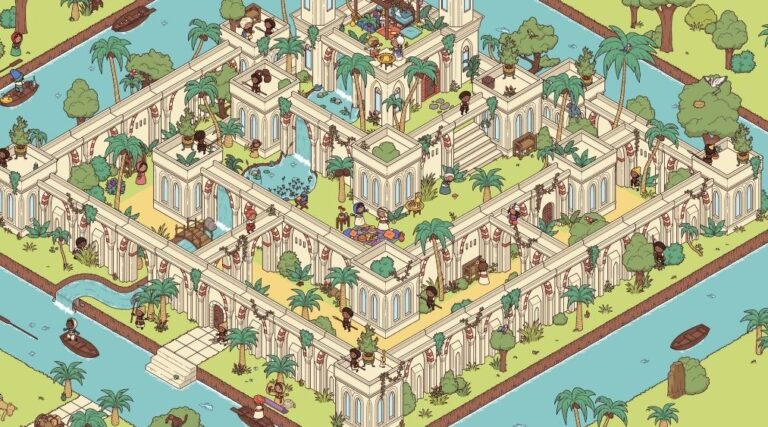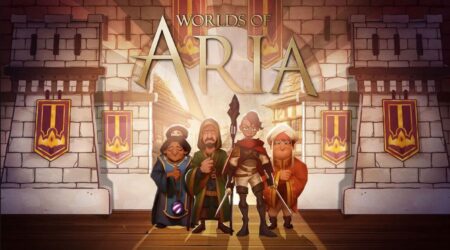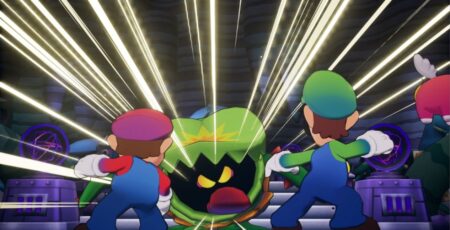Originally released on Steam and GOG for Windows and MacOS, Hidden Through Time 2: Myths & Magic now finds its place across all platforms. In this 2D hidden object sequel from Rogueside, players venture into charming, hand-drawn worlds. It continues to be an approachable, straight forward title for all ages offering a cozy experience.
In Hidden Through Time 2: Myths & Magic, the single-player campaign mode takes players through four different eras. Each era is guided by a voice narrator sharing very brief stories themed around the myths and tales of every map location. The narration does not tell a story with any compelling depth. Instead, it is just a short overview that introduces players to the map and its environmental setting.
In the Middle Ages era, as an example, a party of adventures gathers in a forest to receive a quest from the Lady of the Lake. The story for this era moves players through different maps as part of their quest journey. While it successfully ties in the mechanic of finding hidden objects, it falls short for those looking for more story. Upon reaching the end of their quest and facing an adversary, the next map’s narration doesn’t further explain how or what happened.
The adventures simply reenter a townscape and rejoice in their victory. Players default to the setting and objective to acquire the hidden objects. Transitioning players from map to map in this manner falls short of providing those who seek motivation with story development. Especially, since there is no consequence if you don’t find all hidden objects. While it falls short in trying to integrate a story, the core mechanics and features of being a hidden object game carry it through.
For each era, there are eight levels with one being a bonus level. Each map offers a select number of items for players to find. Objects range from the smallest item like a key to a large bear, tucked behind a bramble of greenery ever so slyly. With details so small and carefully hidden amongst so much distracting noise in the environment, players can zoom in and out with ease. I found it best to utilize the touch screen feature when zooming in and moving around through the map. It feels quicker and more intuitive than using the analog and buttons.

Almost every object in Hidden Through Time 2: Myths & Magic is interactive. Villagers will let out a wail. Wolves will howl. The apple on the table will receive a literal sound bite and is bitten. This makes for a world that feels more alive while also signaling to players that they have properly interacted with an item. This mechanic adds further clarity to whether or not the item in question is the correct one you’re are seeking. When the correct object is found, a distinct ding sounds and a circle is placed around that item. For this purpose, objects are tricky in Hidden Through Time 2: Myths & Magic. Sometimes items are hiding within objects like inside a box or buried in sand. Similarly, some are found at different times of day or seasons.
A legend is always located at the bottom of the screen that lists all the items for that map. In the top corners of each item shows an icon of which season it can be found in. Hidden Through Time 2: Myths & Magic utilizes Reality Shift, a mechanic that alters the aesthetic of the environment and what objects reside within it. Players experience shifts from night to day or a scenic snowy mountainside to fog by toggling the action for it at any time. This shift in scenery offers respite for tiring eyes scouring the map for the tenth time trying to find a pesky snail. Should players find themselves unable to uncover all items requested for each map, find comfort in knowing you don’t need to.
Progressing through each era and its levels can be done with a ‘next’ icon. Players do not need to find all items on a map to enter a new area. A lock icon with the required number of objectives will indicate how many cumulative items from the era players will need to move forward. Between the Reality Shift and the player’s choice to move away from a map creates a low-stress experience. However, an impactful drawback to skipping ahead is the absence of a function that allows players to shift between levels effectively. While players can revisit a previous level, there is no internal hub that allows a seamless transition. Instead, players return to the main era selection screen to access the desired level.
In addition to its single-player campaign mode, players who revel in hidden object games have access to the Architect mode. In this creator mode, players build their hidden object maps fully equipped with the tools and assets seen in their gameplay during Hidden Through Time 2: Myths & Magic. Upon finishing a curated map, players can share their creations online for others to experience.
Hidden Through Time 2: Myths & Magic simply wants players to experience ease in finding objects. Finding lost or misplaced items in our lives can feel frustrating and dire in our moments of need. While this sequel introduces themed narratives for each era with no substantial depth in story, it doesn’t necessarily need it. If the aim is to encourage a stress-free play experience for all ages, Hidden Through Time 2: Myths & Magic does so. The narrative it does offer thematically grants a small window of immersion which counters the tedious feeling surrounding finding items.
Hidden Through Time 2: Myths & Magic is available now on Xbox Series X|S, PlayStation 5, Nintendo Switch, and PC.
Hidden Through Time 2: Myths & Magic
-
Rating - 7.5/107.5/10
TL;DR
Hidden Through Time 2: Myths & Magic simply wants players to experience ease in finding objects. Finding lost or misplaced items in our lives can feel frustrating and dire in our moments of need.







